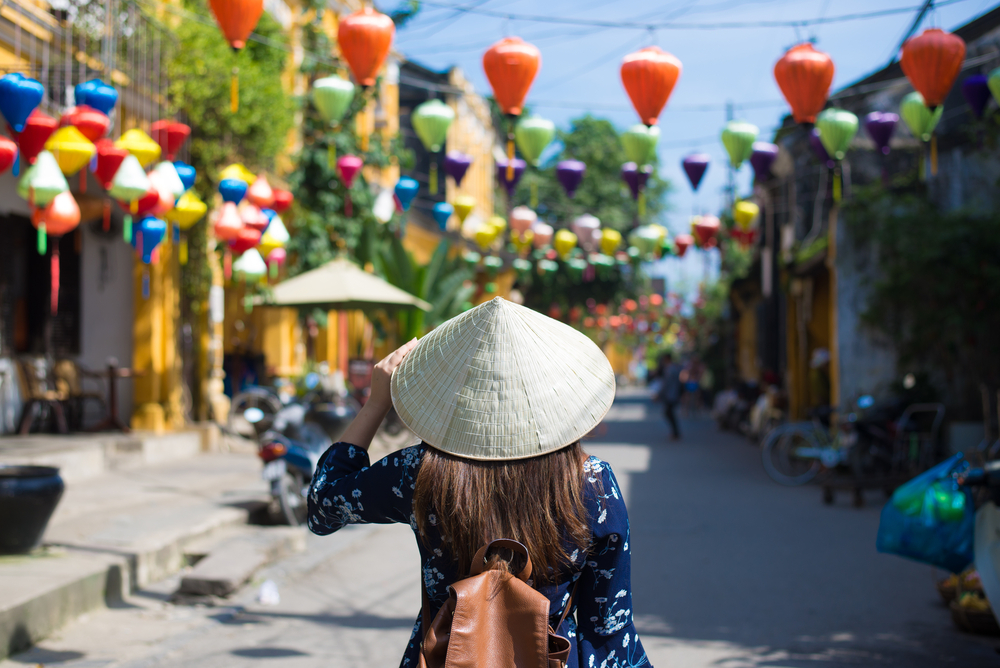Vietnam boasts outstanding scenery, a rich cultural legacy, and a rich historical background. From its busy cities to its calm countryside, it hosts some of the most famous sites in Southeast Asia. Every site reflects the nation’s historical relevance, artistic genius, and resiliency. Whether your passion is adventure, history, or the natural world, Vietnam’s sites will permanently touch your heart.
Ha Long Bay: A Natural Wonder of the World
Ha Long Bay, tucked away in the Gulf of Tonkin, is a hypnotic panorama of limestone karsts and green waves. Comprising more than 1,600 islands and islets, many of which remain unspoiled, the Bay is a UNESCO World Heritage Site. Ha Long Bay is unique not only in its surreal beauty but also in the tales around it. Folklore holds that dragons dispatched to guard Vietnam from invaders shaped the Bay, imbuing this breathtaking location with a magical atmosphere.
Cruising the Bay is an amazing journey with views of uncommon animals, floating fishing communities, and secret caverns. Among the most striking are Sung Sot (Surprise Cave) and Thien Cung Cave, both of which have complex stalactites and stalagmites. While Cat Ba Island, the biggest island in the Bay, provides adventure-packed walks and immaculate beaches, the calm waves of the Bay make kayaking a perfect place.
Hanoi’s Old Quarter: A Window into Vietnam’s Past
The capital of Vietnam, Hanoi, deftly combines the old with the modern; the Old Quarter is especially magical. This labyrinth of little lanes spanning more than a millennium captures the energetic character of the city. From silk and silver to bamboo and spices, every street was historically committed to a particular commerce; many continue to follow these customs now.
Moving over the Old Quarter feels as though one is traveling through time. Unique to Hanoi is the sight of cyclos whirling across busy streets, the scent of freshly made egg coffee, and the rhythmic sounds of street vendors. Along with Ngoc Son Temple, a monument to the spiritual and cultural core of the city, the area features the famous Hoan Kiem Lake, home of the Turtle Tower.
Hue Imperial City: A Glimpse into Vietnam’s Royal Past
Once the capital of the Nguyen Dynasty, Hue is a must-see destination for those interested in history. Showcasing Vietnam’s regal past, the large complex of palaces, temples, and courtyards known as Hue Imperial City Comprises a moat and sturdy stone walls. The Forbidden Purple City inside the complex was previously reserved for the emperor and his closest friends.
Hue’s Imperial City’s architectural magnificence is evidence of Vietnam’s great past. Complex carvings, dragon themes, and royal buildings such as Thai Hoa Palace and the Ngo Mon Gate transport guests to a time of magnificence. The Perfume River, which elegantly runs through the city, accentuates Hue’s beauty and makes a boat trip peaceful and lyrical.
Hoi An: The Timeless Charm of an Ancient Town
A treasure store of history and culture, Hoi An is a town classified by UNESCO. Hoi An is among Vietnam’s most beautiful locations, well-known for its lantern-lit alleyways, well-preserved architecture, and distinctive mix of Vietnamese, Chinese, and Japanese inspirations. Originally a bustling commercial port, the town’s cultural variety is shown in its old merchant buildings, pagodas, and famous Japanese-covered bridge.
Hoi An is unique in that it may transport guests to another age. Thousands of lanterns light the streets as evening sets, producing a wonderful atmosphere. The town is also well-known for its tailor stores, where talented artists create one-of-a-kind pieces in a few days. Visitors can also soak in the peace of An Bang Beach, cycle over verdant rice terraces, or engage in traditional cookery lessons.
Cu Chi Tunnels: A Testament to Vietnam’s Resilience
Near Ho Chi Minh City, the Cu Chi Tunnels are a potent reminder of Vietnam’s combat past. During the Vietnam War, the Viet Cong employed this complex underground network—which spans 250 kilometers—for communication, cover, and fighting tactics. A sobering and instructive visit, crawling into the tunnels provides first-hand knowledge of the suffering Vietnamese soldiers go through.
Despite their terrible background, the Cu Chi Tunnels stand for tenacity and creativity. Visitors can tour the tunnels, see secret trapdoors, and even test-fire at a nearby range. The encounter honors the Vietnamese people’s tenacity while clarifying the conflict’s complexity.
Conclusion: Vietnam’s Landmarks as Living Narratives
Vietnam’s famous sites are living narratives of the nation’s history, culture, and natural beauty, not only places of tourism. Every place, from Hoi An’s timewold alleyways to Ha Long Bay’s magical appeal, has a narrative just waiting to be unearthed. Visitors to Vietnam set out on a voyage as rich as it is unforgettable, whether they are visiting historic cities, negotiating subterranean tunnels, or savoring the tranquility of nature. Every visitor leaves with memories that will last a lifetime, thanks to the monuments of the nation, which attest to its past, soul, and continuing appeal.
Read more: Floating Villages of Cambodia: A Unique Glimpse into River Life




